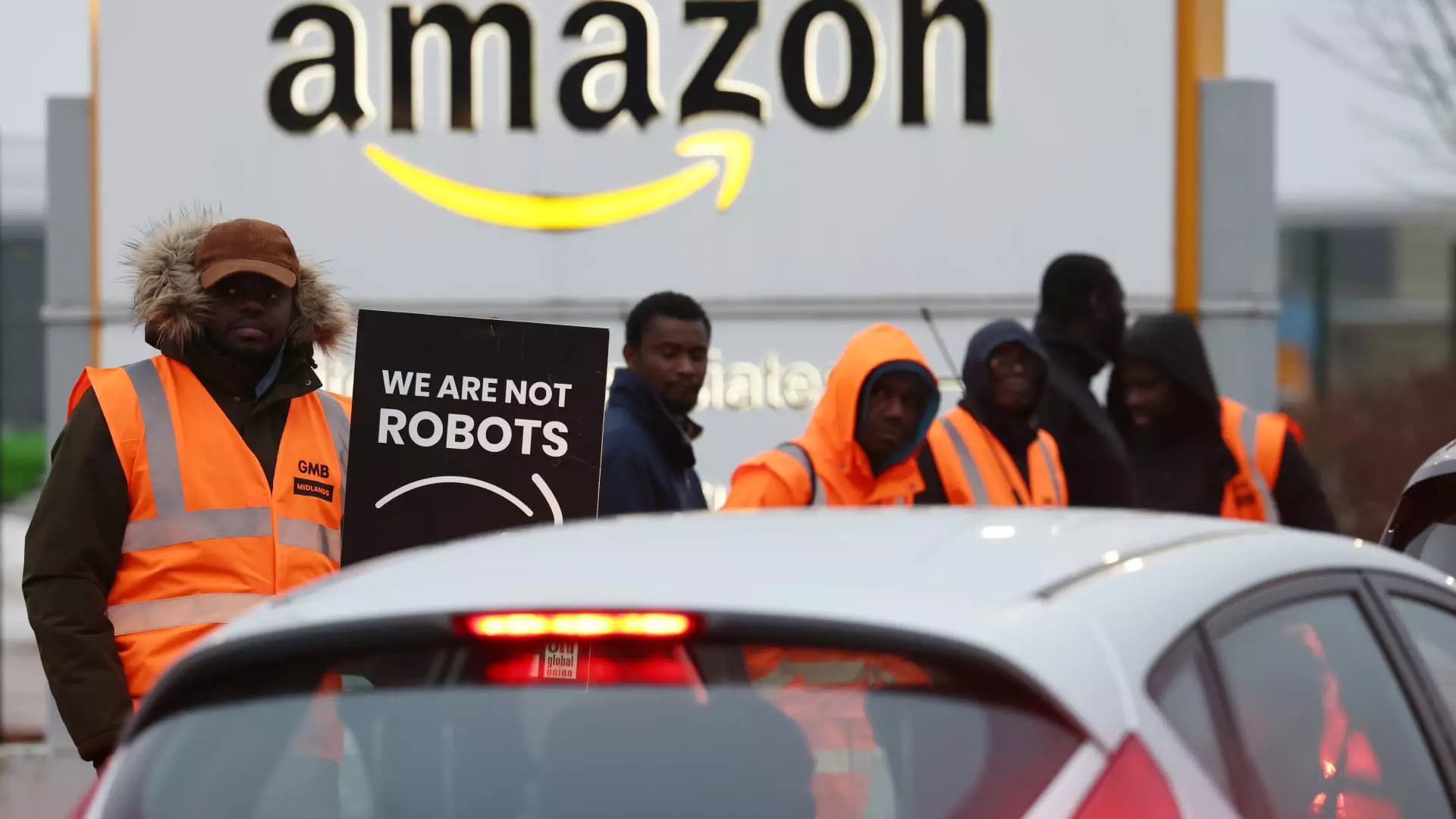In recent years, the narrative surrounding technological innovation has been predominantly positive—advocating for increased productivity, reduced costs, and accelerated growth. However, beneath this shiny veneer lies a troubling reality: the relentless march of automation, exemplified by Amazon’s deployment of its millionth robot, signals a paradigm shift that threatens the very fabric of employment for middle-class workers. As Amazon’s robots become more sophisticated, integrating advanced artificial intelligence like the “DeepFleet” model, the promise of efficiency is often used to justify workforce reductions, illustrating a fundamental flaw in our obsession with technological progress. Automation, in this context, is less an enabler and more a harbinger of job displacement, particularly in sectors that have traditionally been the backbone of our economy.
Technological Progress or Job Erosion?
Amazon’s push toward full-scale robotic integration, with robots capable of handling heavy lifting and complex logistics tasks, exemplifies the trend toward replacing human labor with machines. While advocates argue that robots augment worker safety and efficiency, they often ignore the human cost. History teaches us that technological revolutions have frequently come at the expense of employment opportunities, and the current AI boom is no different. The CEO of Amazon, Andy Jassy, openly admits that AI will lead to a “shrinking” workforce; this acknowledgment is a rare moment of honesty in an industry cloaked in euphemism. The statistics speak volumes: over 150,000 tech sector layoffs in recent years, with many driven directly by automation and AI advancements.
Rather than fostering an environment of shared prosperity, these developments foster a new era of inequality—where the gains are concentrated in the hands of a few corporate giants, while loyal middle-class workers face insecurity and unemployment. The hope that AI will create “new opportunities” rings hollow when faced with the realities of widespread job cuts and economic instability, especially given that many of these displaced workers lack the skills necessary to transition into the new tech-centric roles supposedly being created.
Cost-Cutting or Societal Deterioration?
Certainly, corporations like Amazon tout their AI and robotics investments as means to create “more opportunities” for employees in maintenance and engineering roles. Yet, this narrative is selective and overly optimistic. The reality is that investments in automation often fuel a shift towards a leaner workforce, with some jobs becoming obsolete altogether—a process accelerated by profits rather than societal well-being. The move to reduce employment in favor of AI-driven efficiency isn’t just a matter of technological feasibility; it’s a calculated cost-saving measure, often at the expense of reliable, decent-paying jobs.
Moreover, this shift threatens to worsen social disparities. When economic security relies more heavily on gig work, short-term contracts, or unstable tech jobs, it undermines the stability that has historically underpinned middle-class prosperity. While the elite and tech executives may profit from the fruits of automation, the broader economy risks hollowing out, leaving communities more vulnerable to economic shocks. This trend is especially troubling in light of the ongoing shift in corporate priorities—priorities that emphasize shareholder value over worker dignity.
Balancing Innovation with Human Dignity
Despite assurances from Amazon and other tech giants that automation will coexist with employment, the underlying trend suggests otherwise. The actual trajectory indicates a future where human workers are increasingly rendered redundant, not because they lack skills or motivation, but because corporations prioritize automation for its immediate cost benefits. Rhetoric about “creating new opportunities” can’t hide the harsh reality that many jobs—especially in logistics, manufacturing, and customer service—are losing ground.
True progress must involve a balanced approach that values human dignity and societal stability. Policies and corporate strategies should focus on upskilling displaced workers, providing them with the tools necessary to thrive in tech-driven environments, and ensuring widespread access to quality education and training. Without this, automation risks becoming a catalyst for social fragmentation, fueling economic inequality rather than bridging it.
The narrative that AI and robotics represent unavoidable progress must be critically examined. Behind the shiny veneer of innovation lies a complex web of economic shifts that threaten to marginalize millions. While technological advancements are here to stay, their true test lies in how society manages the transition—prioritizing human well-being over corporate profits and recognizing that sustainable growth cannot come at the expense of the working class.

